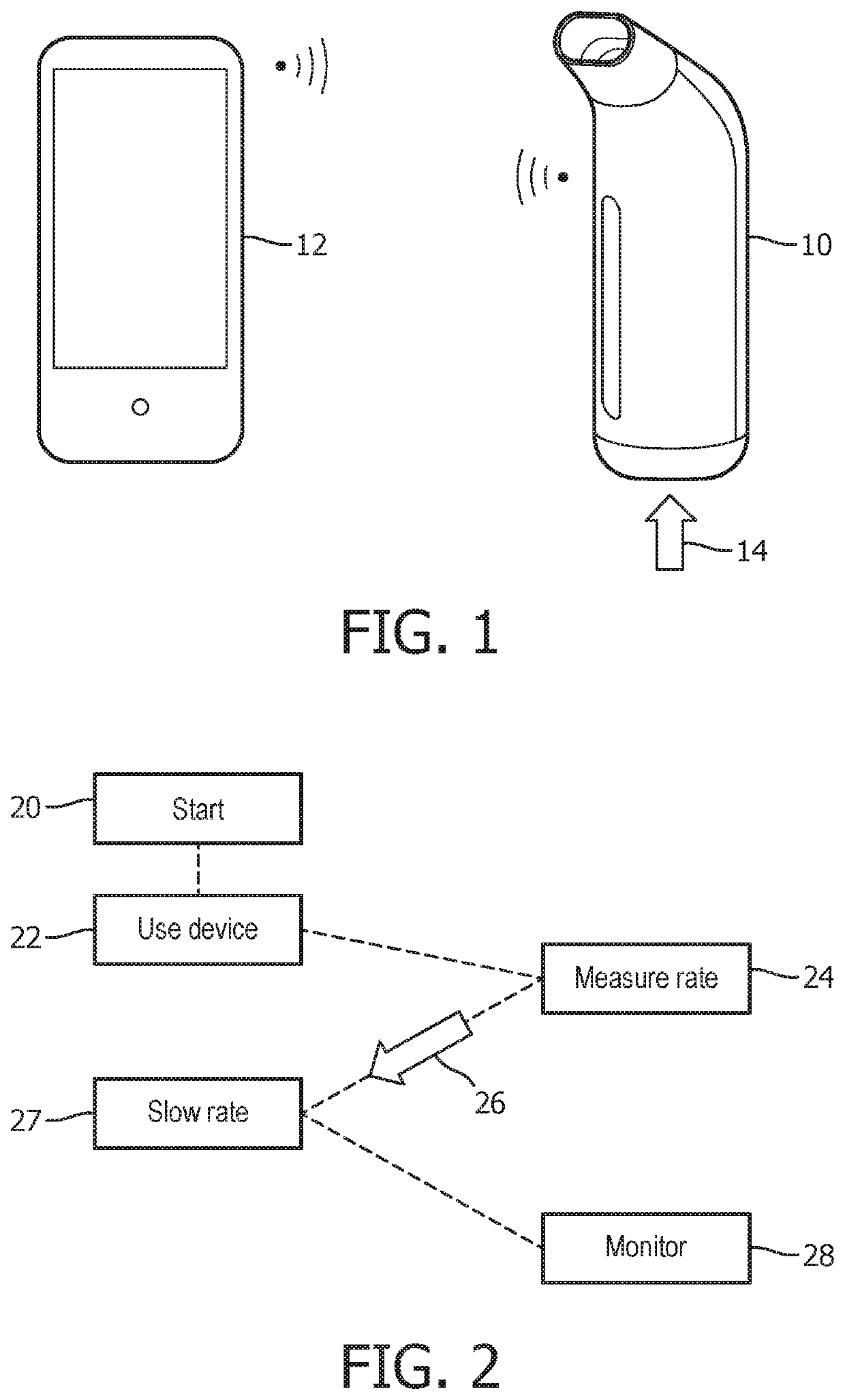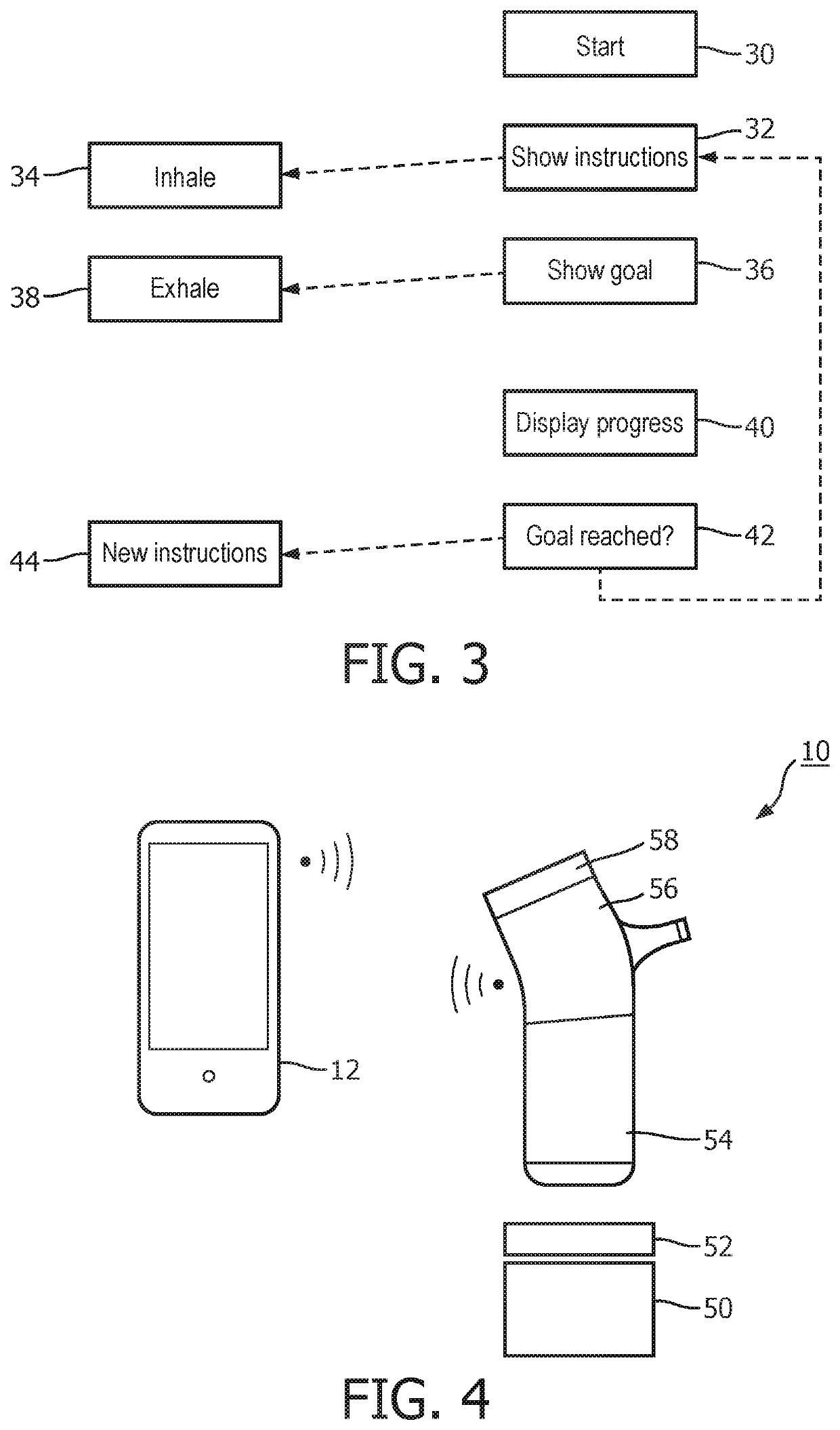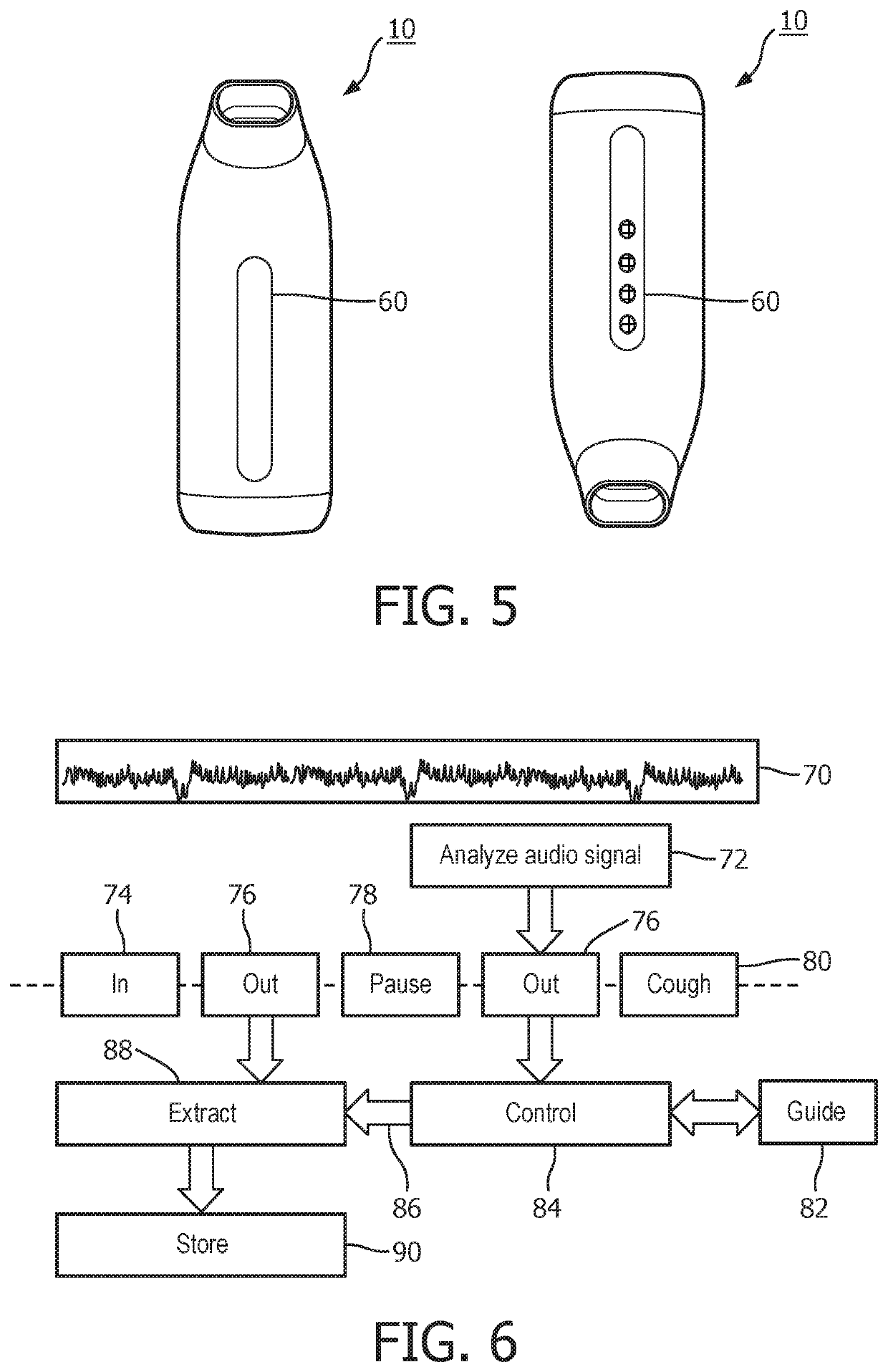Breathing training, monitoring and/or assistance device
a technology of breathing training and monitoring, which is applied in the direction of gymnastic exercise, diagnostic recording/measuring, application, etc., can solve the problems of limiting the available space during inhalation, and affecting the breathing of patients
- Summary
- Abstract
- Description
- Claims
- Application Information
AI Technical Summary
Benefits of technology
Problems solved by technology
Method used
Image
Examples
Embodiment Construction
[0100]The invention provides various improvements to breathing training, monitoring and / or assistance devices. It relates to breathing training, and provides a system for home use, which is designed as a modular system for providing guidance, motivation and confidence to apply breathing techniques advised to COPD (or other) patients. The system is for providing support and guidance during the training of breathing exercises.
[0101]The device takes account of external data which relates to one or more of:[0102]the environmental conditions in which the device is being used;[0103]activity information in respect of the user;[0104]physiological sensor data about the user which is not related to breathing characteristics.
[0105]In addition, in some implementations it acts as an intervention tool in acute moments of shortness of breath, e.g. after physical activity. By then helping the patients to regain their normal or optimal breathing rhythm more quickly, it helps them to stay more active...
PUM
 Login to View More
Login to View More Abstract
Description
Claims
Application Information
 Login to View More
Login to View More - R&D
- Intellectual Property
- Life Sciences
- Materials
- Tech Scout
- Unparalleled Data Quality
- Higher Quality Content
- 60% Fewer Hallucinations
Browse by: Latest US Patents, China's latest patents, Technical Efficacy Thesaurus, Application Domain, Technology Topic, Popular Technical Reports.
© 2025 PatSnap. All rights reserved.Legal|Privacy policy|Modern Slavery Act Transparency Statement|Sitemap|About US| Contact US: help@patsnap.com



